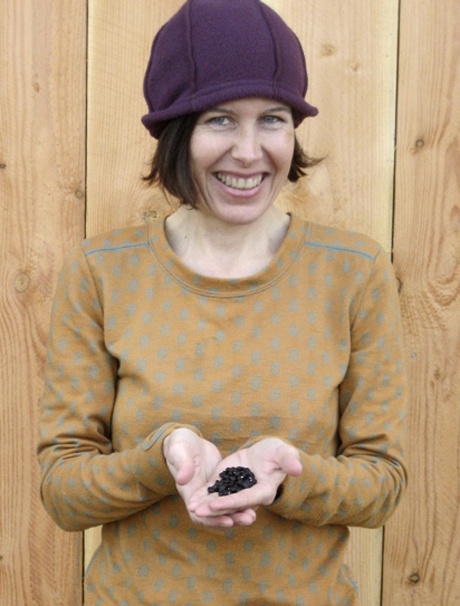What can happen when we really pay attention to where our food comes from?
In Lopezian Nancy Rankin’s case, the realization that China was the place of origin for organic black beans sold throughout the USA led her on a journey that began with calls to organic food distributors, continued through a search for more local sources of dried beans and ended with a packet of bean seeds she’ll soon plant in her garden.
Summarizing her adventure recently, she said: “I set out to find another source for black beans and this whole other world opened up.”
The quest began after a friend received a 25-pound bag of organic black beans, looked at the label and saw that the place of origin was China. Nancy called United Natural Foods Incorporated (UNFI), a distributor of organic foods to stores like Whole Foods, Puget Consumers Coop (PCC) and Blossom.
“I asked them to tell me the place of origin of all their dried beans. I thought they might think I was extreme, but they said it’s the most frequent question they’re being asked now because of buyer/consumer interest in knowing where their food is coming from. That month many of their organic beans — pinto, black, kidney, navy, cannelini, cranberry — were from China!”
“Where are beans originally from, anyway?” Nancy recalled asking herself when she got this news. “I assumed they were from South America. Would I be comfortable if my beans came from that distance? What could I consider local? Then I learned that legumes like lentils and split peas are grown in Canada. That felt closer. But are we even growing beans in the USA any more?”
Through the Local Harvest website (www.localharvest.org/) she found that in Delaware, Pennsylvania, Kentucky, Illinois and California there are farmers who will sell you dried beans. “From Rancho Gordo, a farm in Northern California, I bought colorful, heirloom varieties with great names like Good Mother Stallard, Rio Zape and Yellow Indian Woman, all unique and delicious.”
As her search for dried beans turned up sources closer to Lopez, she also encountered a bit of information that enlightened her. “One farm said you could plant the dried cooking beans they sold you. I made the connection that if you even have a dried bean in your cupboard, it’s like a seed that you can put in the ground and, in the appropriate climate, grow. It was when I saw a friend this winter on Lopez shelling dried beans from her garden that I realized, ‘Whoa, I can grow them here.'”
She shifted her attention from finding farmers to studying seed catalogs. “I had to figure out how the kinds of beans I am looking for are listed. Some catalogs listed dried beans but others used headings like shell and soup beans.” She ended up buying Organic Black Turtle Beans from Turtle Tree Biodynamic Seed Company.
Looking back on this adventure, and ahead to the beans she’ll be growing, Nancy said, “I would love to see our market farmers grow dried beans. Would someone just step forward and say: ‘I’ll do the beans.'”
In the meantime, she plans to learn more about bean seeds offered by a new Lopez seed company, Greenheart Gardens, whose seeds are for sale at Sunset. Finding Lopez grown seeds for dried beans would be a perfect ending to the adventure that began with the simple question: where are my dried beans from?



